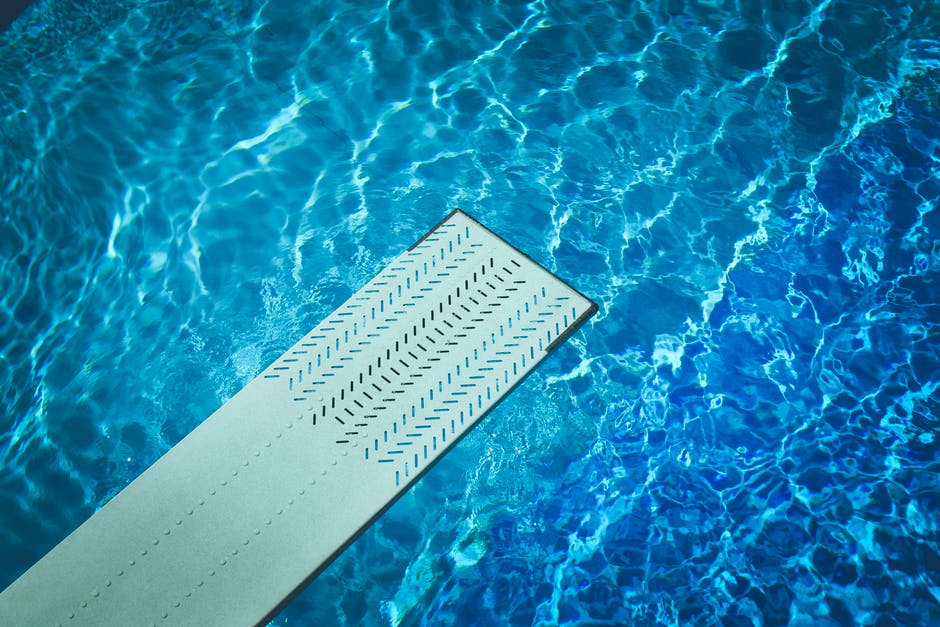Are you looking for a way to make your backyard pool even more enjoyable? As you start getting it ready for summer, you might wonder what you can do to upgrade this year’s experience.
A diving board might be the perfect solution! After all, simply floating around in the pool can get pretty boring. With a diving board, you and your family and friends can have a blast learning new tricks and playing fun games.
Want to learn more about how to choose the right diving board and the basics of diving board installation? You’re in the right place! Let’s get started.
How to Choose a Diving Board
Before you learn how to install diving boards, you’ll want to figure out the type you want to add to your pool. Generally, you’ll have two choices when it comes to residential diving boards: springboard or a platform.
Springboards
Springboards are probably the type of board you remember using when you were a kid at camp. The base is made with – you guessed it – springs. Some styles leave the springs out in the open, so they’re visible on the base, and others are designed to hide them.
The benefit of a springboard is that the springs give you the ability to jump higher. While this can be a ton of fun and allow you to do cool tricks, you’ll need to make sure your pool is deep enough. Otherwise, you run the risk of someone becoming seriously injured.
It’s the fear of these potential injuries that have caused this type of board to fall out of favor among many homeowners.
Platforms
The second type of diving board is a platform. The primary difference is that these boards don’t have springs. Platforms are now considered the best residential diving board. There are a few different options when it comes to this type of board.
You can use a traditional style with a stationary base, or choose a “manufactured platform” or “field fabricated platform” for a custom look.
For example, you could add a “diving rock” to your pool. This is textured to look like a rock and blend into the rest of your poolscaping, but is actually a diving platform in disguise.
Other Considerations
You can purchase diving boards in a wide variety of colors, styles, and materials. You can even choose one that looks like wood or natural stone. You’ll want to make sure, however, that the surface is non-slip.
If you have a saltwater pool, you’ll also want to make sure the board you choose is resistant to corrosion. Otherwise, it won’t last as long and you could end up with rust stains on your pool deck.
It’s also important to note that there are weight limits. Most residential diving boards can hold up to 250 pounds. It’s possible to find some that can accommodate up to 400 pounds, so if you need the extra weight capacity, make sure you check!
Before you make a purchase, you’ll also want to make sure that your city, county, and homeowner’s association allow for diving boards (some don’t!). Also check with your homeowner’s insurance policy. Some companies won’t insure your home if you have a diving board.
After you’ve confirmed your diving board won’t get you into any trouble, you’re ready to move forward.
Diving Board Installation: The Basics
Now that you have an idea about how to choose a board or platform, it’s time to dive (see what we did there!) into the basics of installation.
First, it’s important to know that traditional diving boards must be installed on concrete. If you don’t have a concrete deck, you’ll need to have a pool contractor pour a concrete pad. For safety reasons, never attempt to install an above ground pool diving board.
Most manufacturers recommend having a professional install your diving board. Even a tiny error can result in potential injuries. However, if you’re comfortable taking this project on yourself, here’s what you need to know.
1. Ensure the Pool is Deep Enough
In general, you must have a deep end of at least 7’6” to even consider installing a diving board. In addition to the depth, you also need to calculate your diving envelope. This is the area where a diver may enter the water.
When checking the diving envelope, you need to not only make sure that the pool directly under the diving board is deep enough, but also that the slope of the pool from the deep end to the shallow end isn’t too steep. Otherwise, someone could get hurt!
It’s often best to let a professional pool company calculate this and confirm that your pool can safely accommodate the board you want.
2. Install the Jig
This is the metal base that goes under your concrete block. This is another step that’s best done by a professional.
3. Bolt in the Board
If you’re updating or replacing your board, you can probably handle the bolting on your own. You’ll just want to make sure that the bolts line up with the holes in the jig you already have. Otherwise, you may be able to use an epoxy kit and drill new holes.
If in doubt, just have the pool company do this step too. This way, you can ensure that everything is as safe as possible.
Summer is Almost Here! Start Your Pool Project Today
Whether you’re thinking about putting in a brand new pool or you want to upgrade your current pool with a diving board installation or other cool features, we’re here to help. All you need to do is give us a call or request a no-cost consultation using our convenient online form.
We’ll help you create your unique design plan, give you a fair and accurate quote, and let you know exactly how long you can expect the project to take. Don’t wait, reach out to us today!




